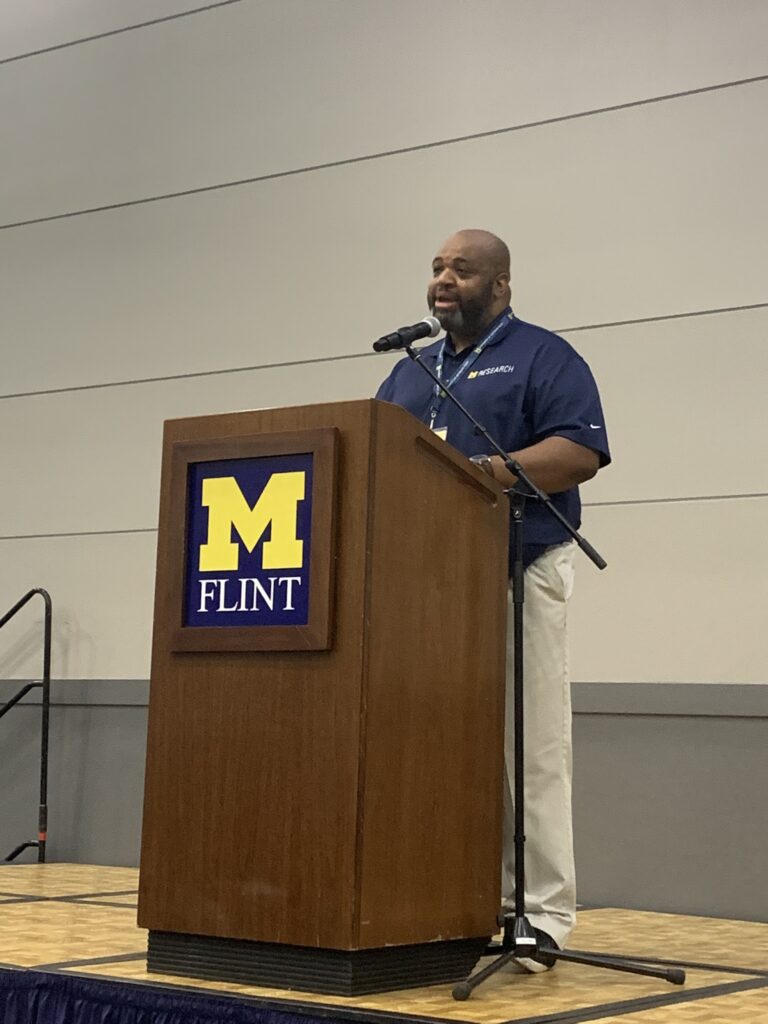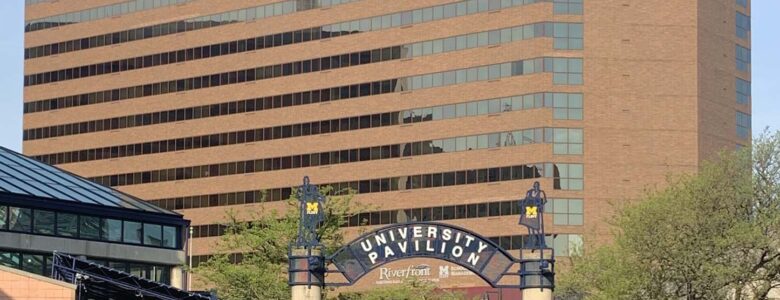On May 12, 2023, the Riverfront Conference Center was a bustle of interdisciplinary conversations as UM-Flint hosted the return of an in-person annual Student Research Conference. Forty-six student researchers from UM-Flint, Kettering, and Mott Community College delivered oral and poster presentations to faculty, friends, and family.
Opening Remarks
Randall Duncan, veteran researcher and executive director of UM-Flint’s Office of Research and Economic Development offered the welcoming remarks. “I am a researcher first and foremost,” he said. “I am fortunate to be able to be here and watch these young students do fantastic research.” Duncan mentioned attending the National Conference on Undergraduate Research in Wisconsin as recently as April 13-15, together with one of his students, where 3,200 undergraduate researchers from from across the United States gathered. He assured the audience that what was on display in the SRC conference room at the Riverfront Conference Center was every bit as cutting edge as the work coming out of any institution across the country.
The difference, however, is the direct mentorship and close-knit peer groups these students experience in developing their research projects in a community like Flint. When UM-Flint alumnus Dallas Anderson and NIH program officer visited campus last month, he said, “the thing I remember being such an asset of going to UofM-Flint was the direct attention I got on campus here. There was no better place where you could get that kind of mentorship.” Many student researchers echoed those sentiments at SRC 2023. Lauren Bishai, a wildlife biology student, said, “everyone in Wildlife Bio is so sweet, kind, and sharing. There is of course competition, but it’s friendly. We all want each other to succeed.”
Duncan remarked on how important these research experiences are for the students. “I’ve had about 50 student researchers work with me over the years. About half of them went into the medical field. Many went into research. All of them found success.” Bishai said she plans to continue her education through the PhD level. Many of the researchers in the PT and OT programs said they are headed to med school. Another Wildlife Biology student, Veronica Watson, is planning to start a company to consult with landowners about wildlife and land conservation.
Special Guests
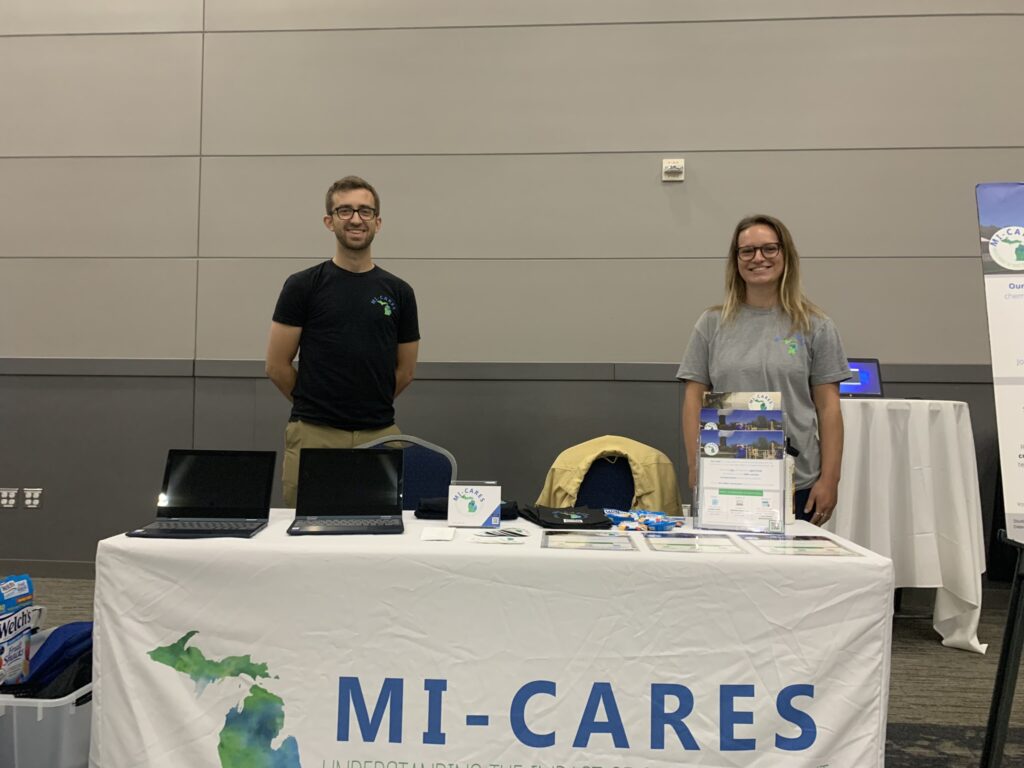
The SRC had some special guests from the Michigan Cancer and Research on the Environment Study. Maxwell Salvatore, doctoral candidate with the school of public health at the University of Michigan and MI-CARE fellow, gave a brief explanation of their massive project funded by the University of Michigan and the National Cancer Institute. The goal of their project is to recruit 100,000 men and women aged 25-44 who live in Michigan and follow them for decades to find relationships between environmental exposures to cancer and other health issues throughout life.
While this project is massive in scope, it’s main goal right now is recruitment so if you fit the criteria, please consider registering via the MI-CARES website.
Presentations
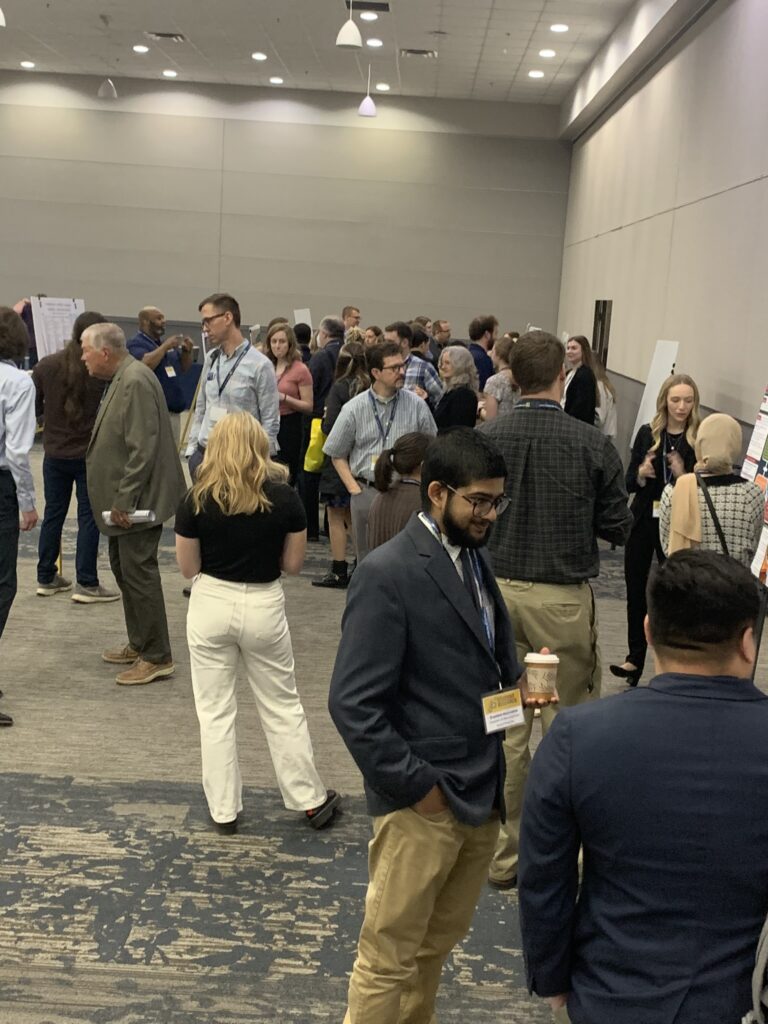
The May 12 event lineup consisted of two sessions of 15 poster presentations in the main conference room with 16 Oral Abstract presentations in each of three breakout rooms taking place between the sessions. In his opening remarks, Duncan noted that “the work being done today goes far beyond my traditional notions of research in STEM categories alone.” Students presented on categories as broad as humanities, business, wildlife biology, community-based research projects, mental and physical wellness, and more.
Dual Enrolled Researchers
Many students presenting on Friday are dual-enrolled here and in high school. One UM-Flint presenter, Colton King is a Hartland High School student dual enrolled through the DEEP program. He was presenting on a humanities project looking at extremist beliefs in America called ‘The Downfall of Democracy.” Former Chancellor Ruth Person said, “I’m very excited to see the young man’s presentation. He’s really quite accomplished for his age, and it’s been great to mentor him.” Person said that King has taken what he learned in her business class to negotiate a proper equity stake in a business he has started. The business will sell popcorn and raise funds for Manatee preservation.
Another dual enrolled student researcher, Hunter Roznowski, did part of his work as a dual enrolled student with Birch Run High School and Mott. His project looked examined relationships between birth order (including only children) and tendencies toward neuroticism. “I found that there was the highest incidence of neuroticism for only child subjects, and that middle and youngest children had the most protection, but my sample size for this was only 69 participants – I’d like to do the study on a larger scale in the future.” Roznowski plans to major in psychology at Central Michigan University and continue making a research impact.
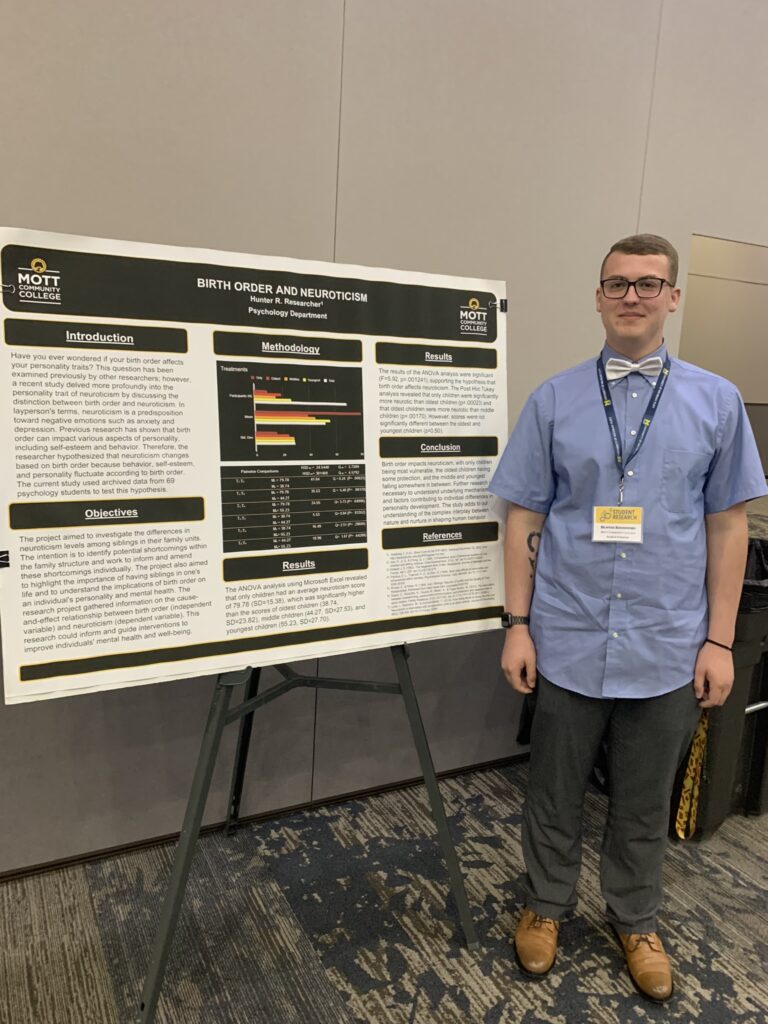
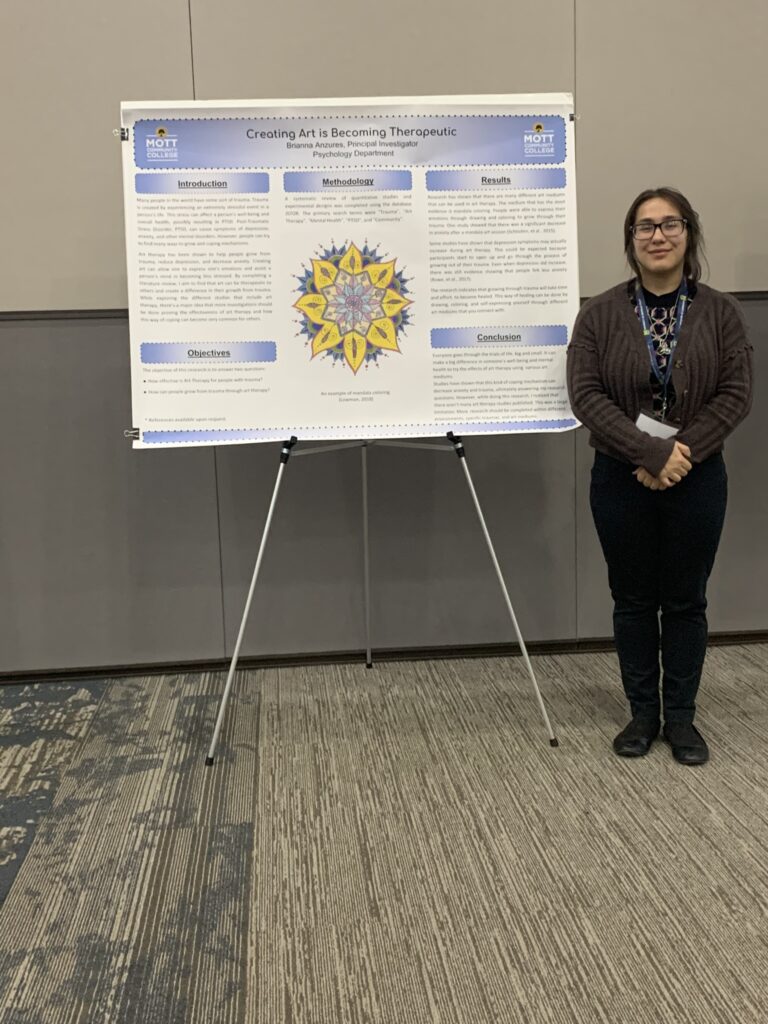
Brianna Anzures, dual enrolled student at Lakeville high school and MCC, presented her project, Creating Art is Becoming Therapeutic. Anzures said, “I’ve found that it’s really exciting to do [research]! Science has always initimidated me, but when it comes to people – there’s a lot of diverse areas that can be researched.”
“The experience of seeing everyone’s projects and their passions is really wonderful.”
Brianna Anzures
One other dual-enrolled student researcher, Teryn Dunning fell ill, but that didn’t stop her. She toughed it out and presented her research project on the Repercussions of Childhood Trauma via zoom. She also connected briefly with Taylor Culinski, president of the UM-Flint Psychology club, who is passionate about that line of research as well.
Oral Presentations
Multiple conference rooms were filled with curious attendees as several researchers presented their projects in breakout sessions.
One room was engineering focused. Naidu Suryachandra Siripuram, Ankit Kammar, and Rasoul Atashipour of Kettering University presented on a way to capture dimensions of mechanical systems with no-touch measurements and create ‘digital twins’ of them to do computer analyses of their durability and structural health under stress. Aron Yang presented his project on understanding flow-mixing that happens at a micro scale. According to the project, many biologists and biochemists are unaware of the ways that fluids behave differently at scales below the cellular leve, where the dynamics are less well known. Yang’s faculty advisor, Yassir Aboelkassem said, “Gaining knowledge of how microfluids can mix could help researchers much more efficiently run multiple tests on a small bio-sample.”
Another room was full of biology and science lectures. Sam Lazar presented his research project looking at ways to protect a threatened turtle population. Veronica Watson examined sampling and biodiversity in Michigan’s vernal pools, temporary small water bodies that are teeming with life but rarely studied.
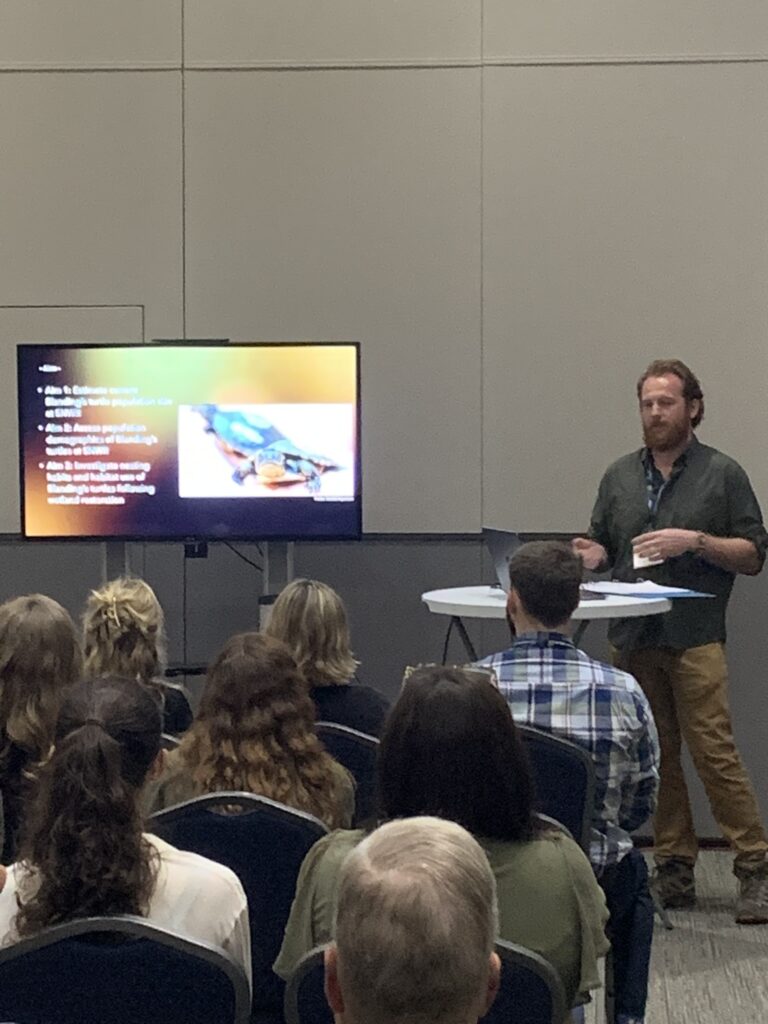
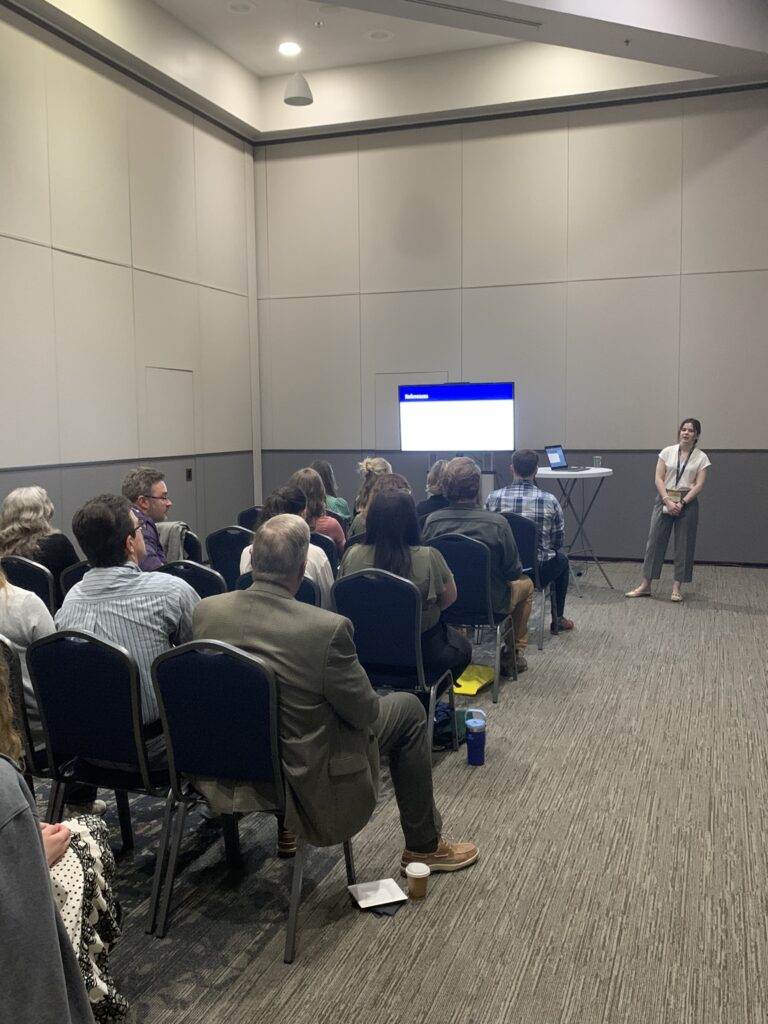
In yet another room, UM-Flint international student Nancy Yang presented a look at the Human Rights Crisis in China through the artist’s lens. Colton King gave his presentation on the rise of extremist xenophobic attitudes in America. In this room, Dylan Doherty presented on ways to improve diversity recruitment in the accounting industry.
The HEART and Move More groups gave their presentations about all of the community-based participatory research they are doing at the Sylvester Broome Empowerment Village. This room had many presentations related to rehabilitation and other work in Physical Therapy and Occupational Therapy.
Posters
The poster sessions were a vibrant mix of passionate conversations, and collaborative ideation from the cross-pollination of ideas across disciplines.
Clair-Marie Gray, Alex Antoszewski, and Autumn Howard presented Developing Career Plans for At Risk High School Students. Their project looks to examine whether vocational field trips can change at-risk youths’ career interest. Randall Duncan spoke with them about plans to connect them with community organizations. “This project is great,” said Duncan. “It’s really important that we get you in touch with some of the local community leaders so that you can do it along with them.”
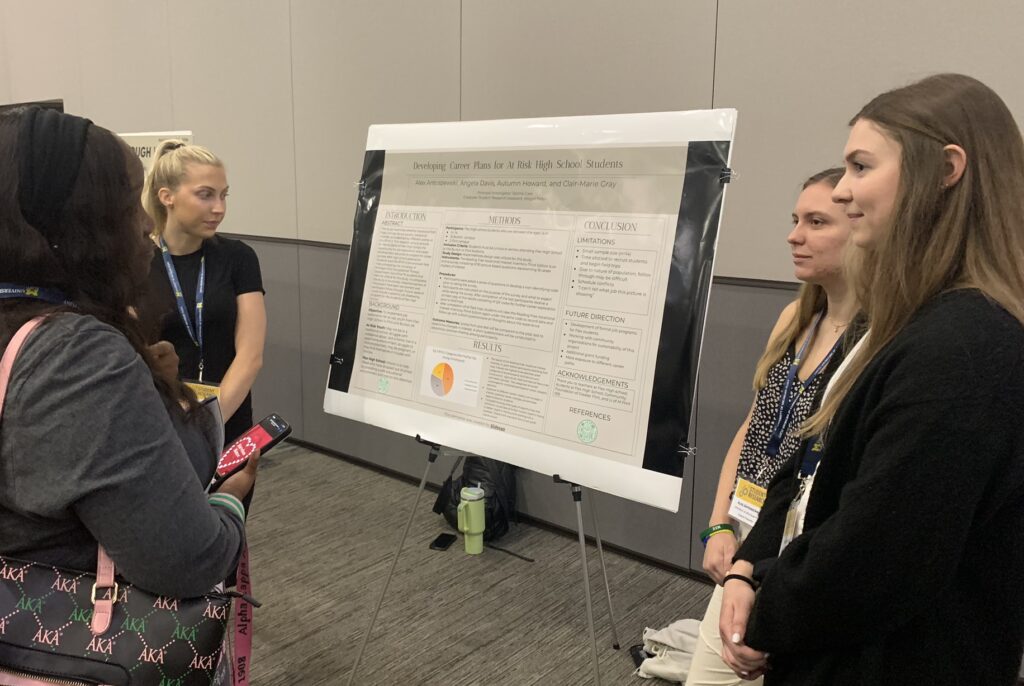
Lauren Bishai explained her wildlife biology project aiming to develop a seed guide for field research on campus. For this research project, they were catching fish and doing a gastric lavage to extract dietary samples from them and examine the types of seeds that are found. “This project is just a start,” said Bishai, “we’re hoping to build an extensive tool that will help our fellow researchers on campus in the future.”
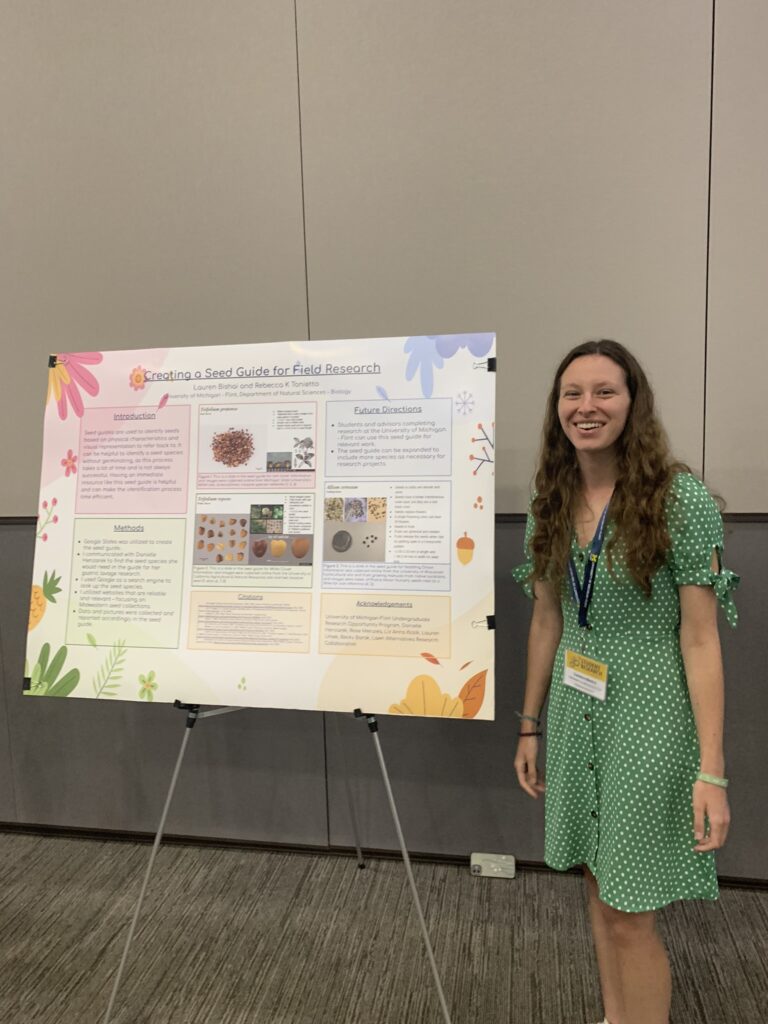
Larissa Kohn-Magee, mentored by her faculty advisor Rebecca Tonietto, presented a poster on their project working toward building a digital repository of the many samples in the UM-Flint herbarium. Kohn-Magee explained that the professor who ran the herbarium unfortunately passed away years ago, and his work was paused in a kind of limbo. “We’re hoping by digitizing the samples, researchers can have better access to them without the need for physically coming and checking them out,” she said.
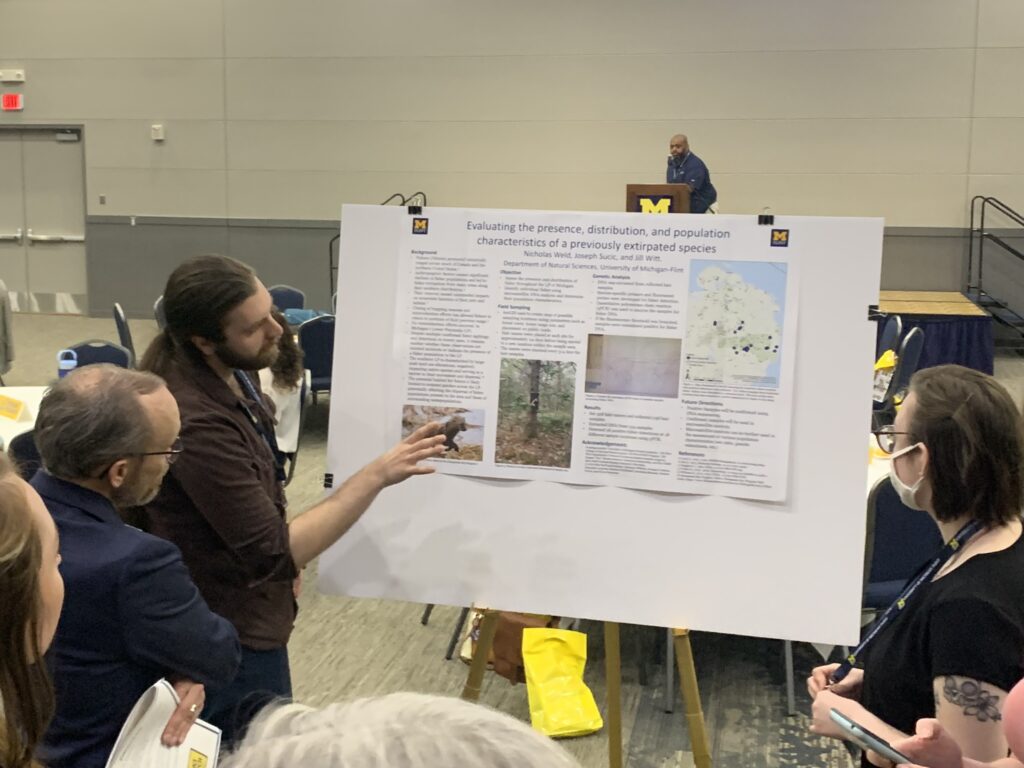
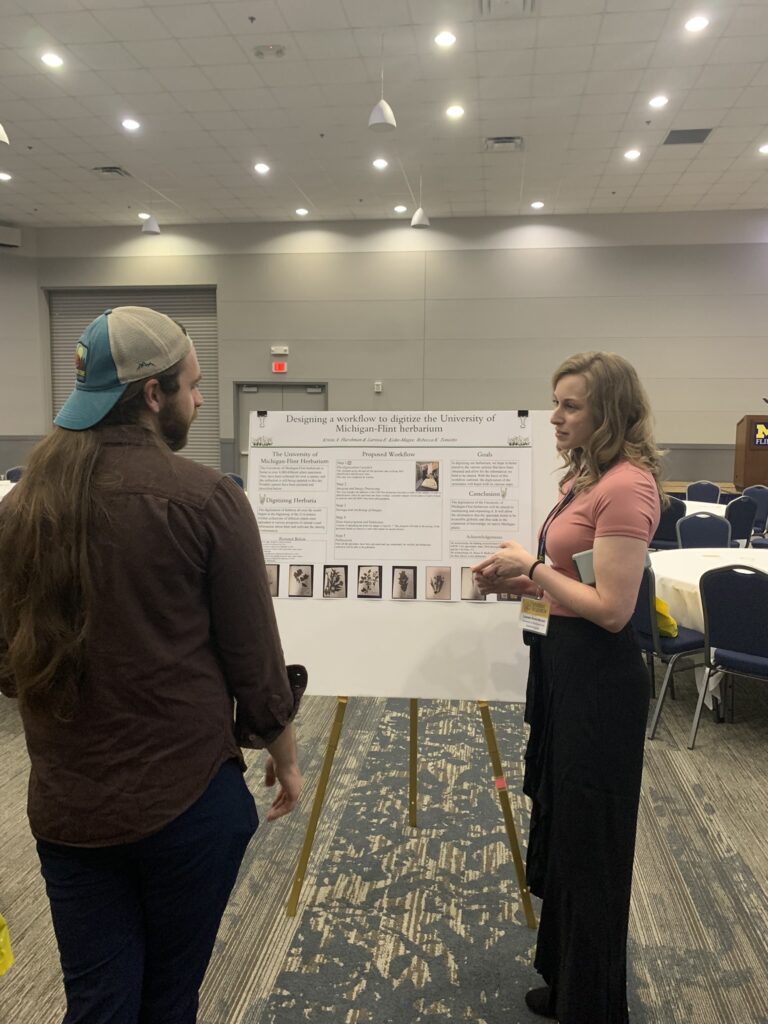
Nicholas Weld worked with Joe Sucic on a project looking at the ways human presence has hared the population of a small mammal called the fisher. It was once considered to be extirpated (locally extinct) from the lower peninsula but is coming back in small areas. In a passionate poster presentation, Weld explained that the information gathered will help track overall ecosystem health and allow for more informed land management decisions.
Alexandra Barto and Marwa Hammami presented their poster on a project titled A Walk Through History, looking at the history of diversity, organizations and clubs on the UM-Flint campus. The project aims to have a physical walk-through demonstration highlighting these facets of our campus and offer many insights into our history, our collective and individual identities, and our relation to equity through time.
The conference was a vibrant return to in-person event and reminder of the value of sharing research ideas and outcomes with wider audiences. There was something for everyone to enjoy and celebrate. Special thanks to Andre Louis and Mary Deibis, the SRC co-ordinators, for a well organized and rewarding event.
